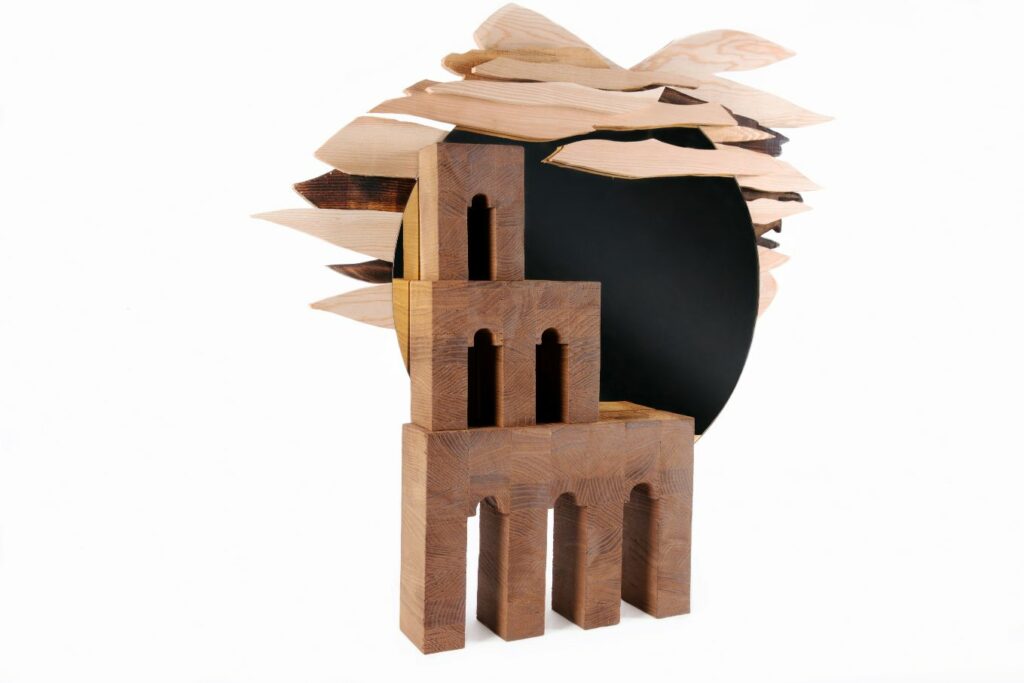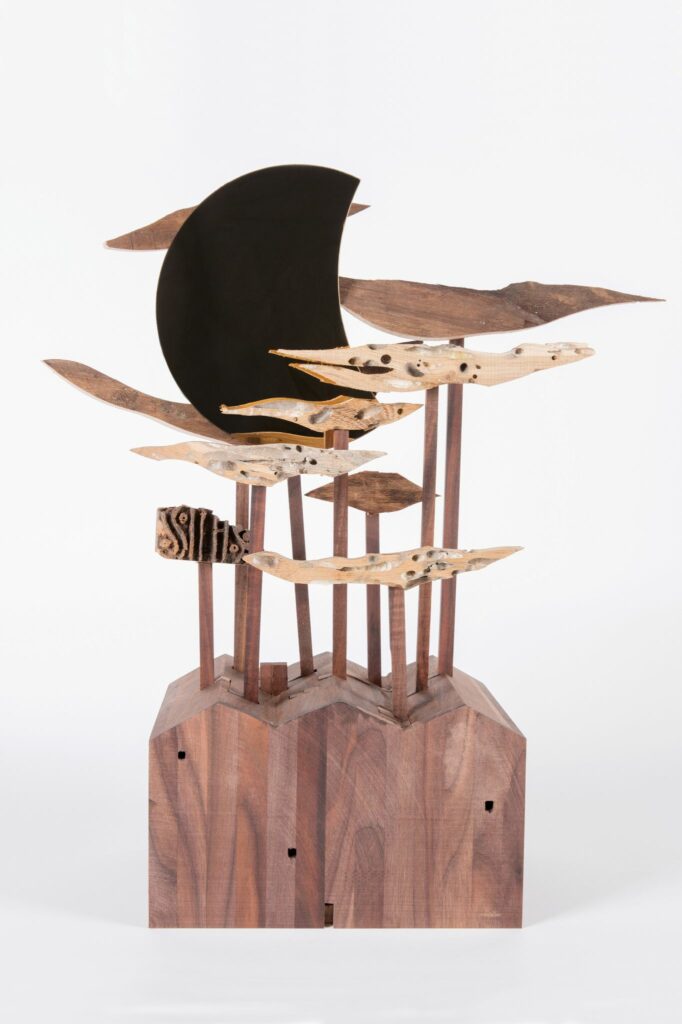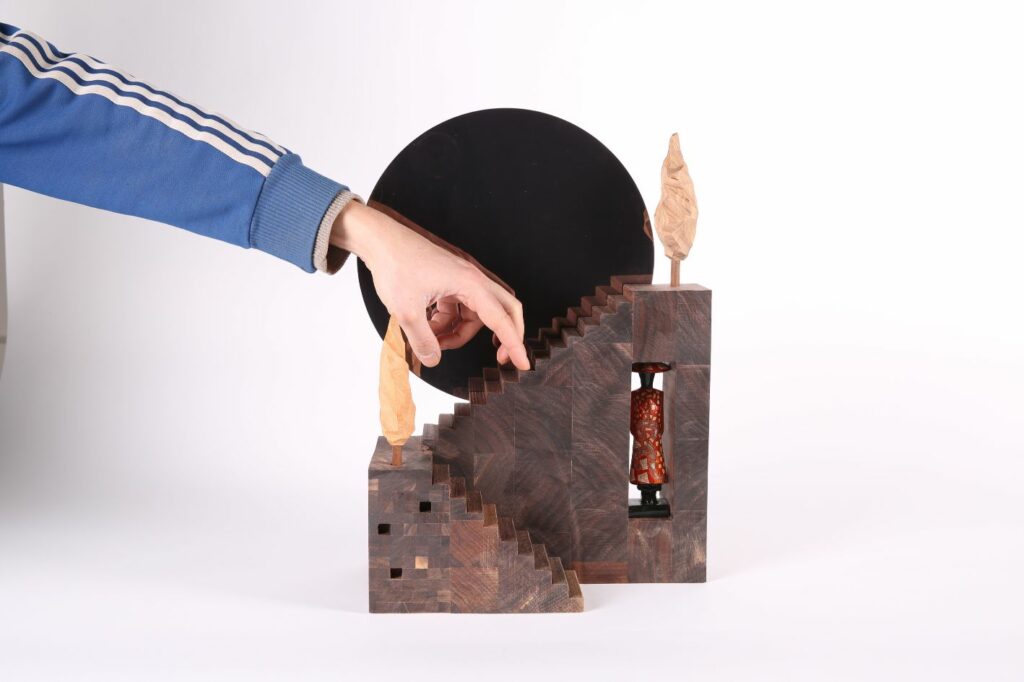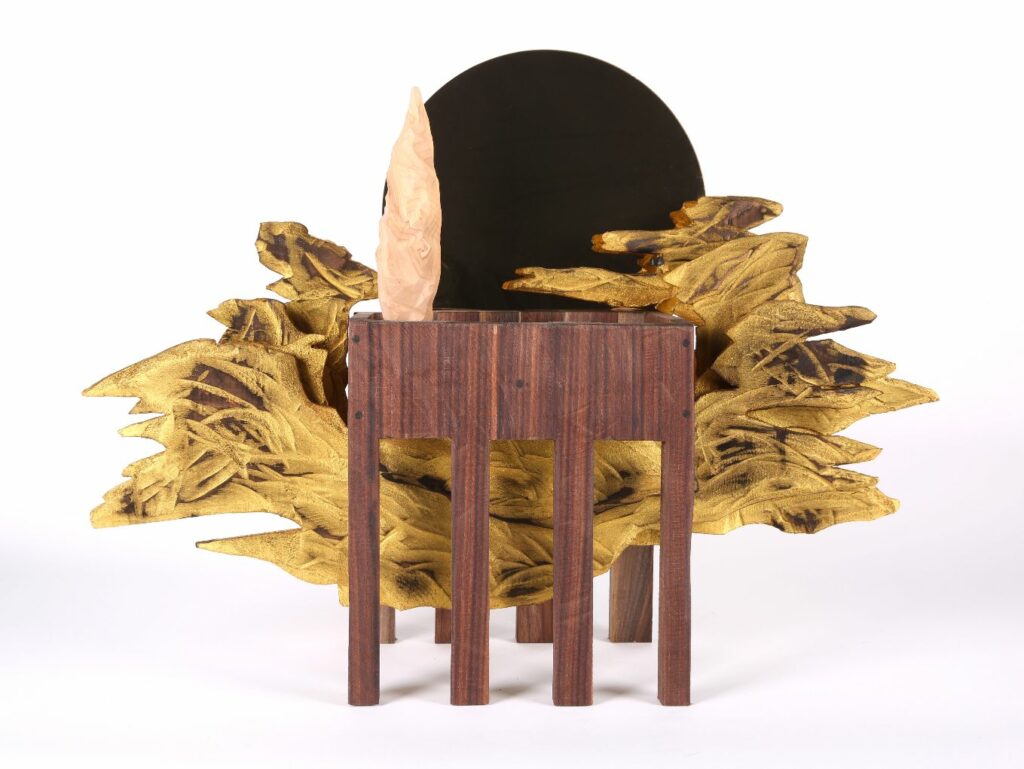Matteo Di Ciommo, an emerging Roman artist, with his new collection “Mirrors at the Moon hour” continues to move on the line between art and design, offering this time his personal interpretation of the moon.

Di Ciommo creates unique pieces, small and refined sculptures that are also objects of daily use and which, in his hands, ennoble their function becoming works of art.
In this last collection the mirrors, both free-standing and wall-mounted, have no functional constraint, they can be seen as paintings to hang or all-round sculptures made of solid wood of various essences: “I wanted to create a horizon, a landscape more than an object, something that was beautiful to look at beyond its function”, says Di Ciommo.

The inspiration comes precisely from the moon, or rather from the personal vision that each of us has of this charming satellite. These mirrors are like many moons on the horizon, intimate, distant, yet so personal because we all have a moon to look at and stare at, which reflects our thoughts, our dreams and in this case also our image.

The main feature of Matteo Di Ciommo’s work is his personal participation in every phase of the project: from the conception of the work to its execution, in a fascinating synthesis of artistic and design creation that is combined with manual know-how, as happens in each of his collections.

He created roofs, chairs and chimneys, then he reinterpreted the concept of tray and shelf with “Tops, shelves and terraces” and again with the collection “Atlantide” he proposed vases that shields landscapes made in bronze.
The study of architecture is always central to Di Ciommo’s poetics, to which he adds his personal feeling that transforms the piece of furniture into a work of art that goes beyond technical formalism.
At the same time, his training as a designer leads him to be attracted to the more concrete side of the project. Among his models of inspiration there are Alessandro Mendini, Ugo La Pietra and Michele De Lucchi – with whom he collaborates – designers who have discussed with the themes of self-production and which have laid the foundations of contemporary Italian design.
When asked how he sees himself and his work, the artist replies: “Many people define me as “the one who makes beautiful things with wood” or “the one who works wood” which, to be honest, I don’t like very much because it’s a bit reductive. I would define myself more as a “Beauty researcher”.









